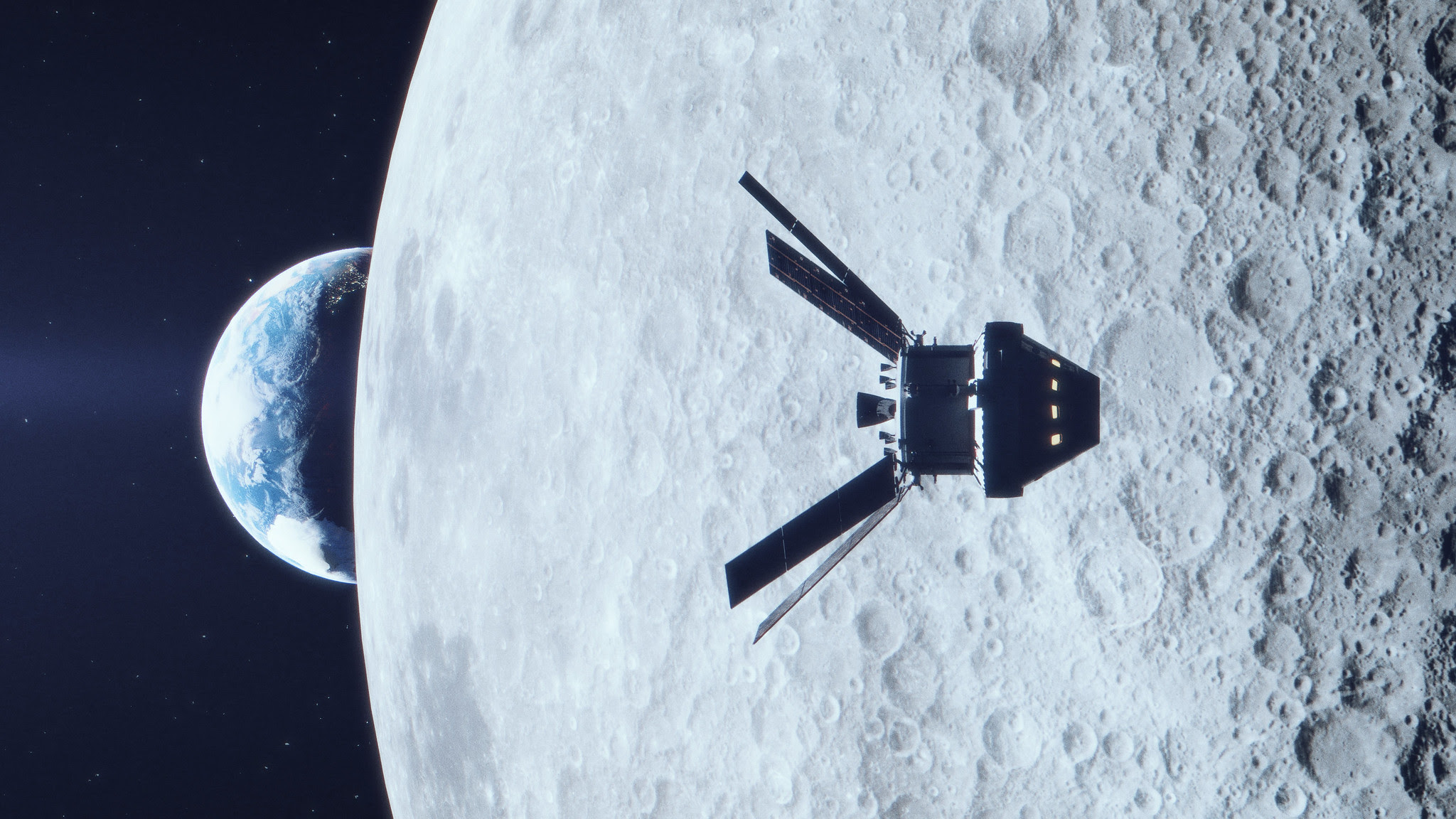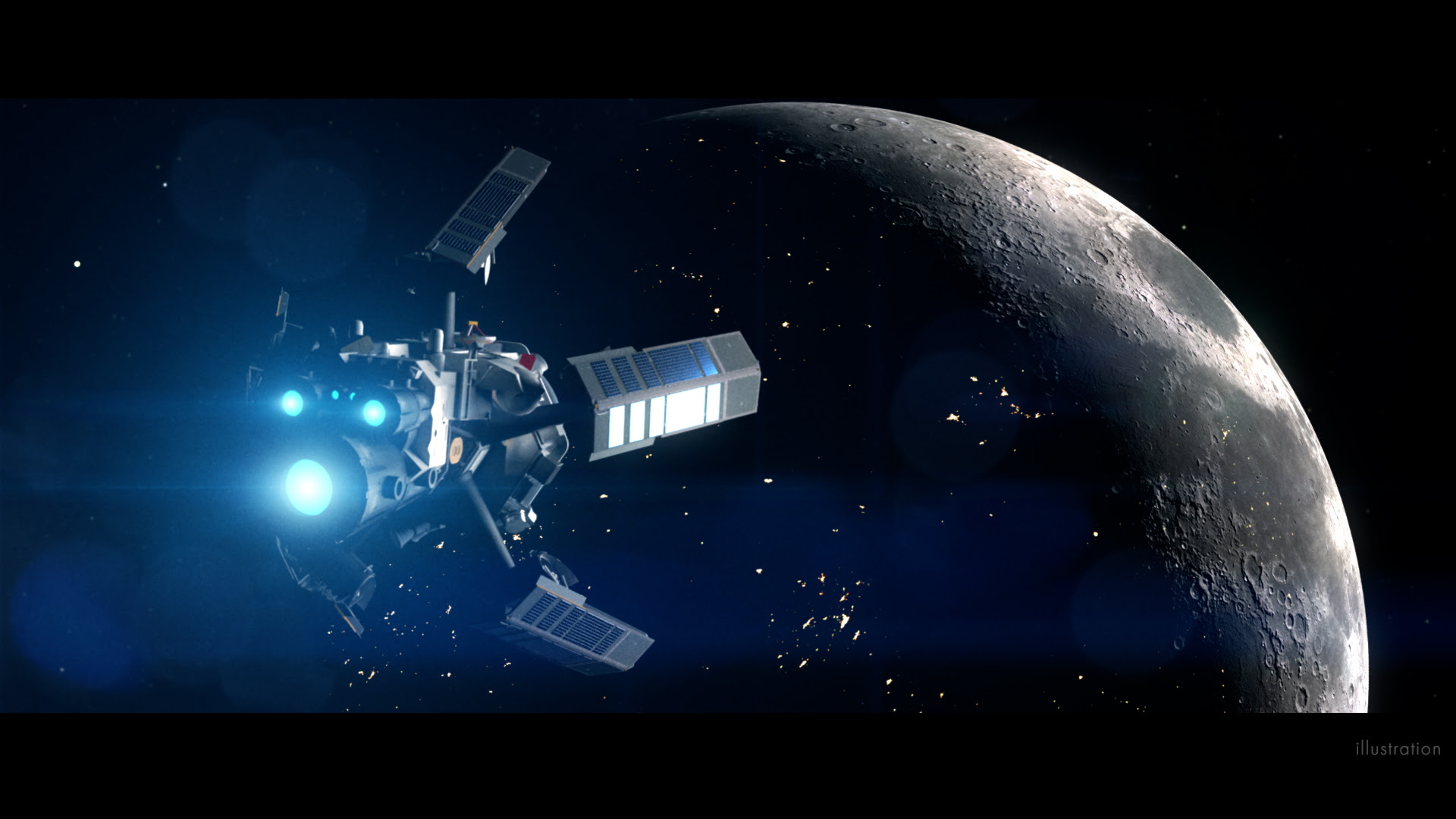After the Big Bang, the universe has known two successive periods, the dark ages during which no star illuminated the observable space and then the reionization period which can be observed thanks to the James Webb telescope. In order to study the dark ages, NASA has the project to install soon a telescope on the dark side of the Moon.
During the first hundreds of thousands of years after the Big Bang, most atoms do not exist, only nuclei composed of hydrogen, helium and lithium isotopes are present. The temperature of the matter is close to that of the Sun and its state is that of plasma, the fourth state of matter. With the expansion of the universe, the atomic nuclei will capture electrons and the plasma will disappear to make way for a hot gas of neutral matter, allowing the fossil radiation, the oldest light in the cosmos, to travel. During the next 150 million years, scientists estimate that matter does not form stars, and the universe cools and becomes darker.
Then, the first stars will be born and gather to form galaxies. The radiation they produce will reionize the matter of the cosmos and will spread over several billion years. But scientists would also like to know what happened during the hundreds of millions of years of the Dark Ages because dark energy already existed even if it did not behave as a simple cosmological constant and did not participate in the acceleration of the universe.
The variations it underwent could help to better understand certain areas of physics, such as supergravity or string theory. In order to study a period when stars did not yet exist, scientists use another diffuse background than that of the fossil radiation studied with the Planck telescope. They believe that hydrogen atoms must have already been emitting at the wavelength known as the 21-centimeter line used to map the hydrogen clouds and the structure of the Milky Way, with its spiral arms and central bar. With the expansion of the universe, this diffuse radio background has been shifted to longer wavelengths and is now in a band not easily accessible by earth-based radio telescopes because of the earth’s ionosphere, which reflects electromagnetic waves.
Scientists thought that installing a telescope in the lunar void would allow it to free itself from the constraints of the ionosphere, according to the same principle as that of the James Webb telescope installed in space to study the radiation in the infra-red by freeing itself from the constraints of the terrestrial atmosphere. If this telescope were placed on the far side of the Moon, it would not be contaminated by terrestrial telecommunications, the background noise of the Sun’s activity, or by the noise of radio emissions from Jupiter and Saturn.
One of the latest projects concerning this type of telescope is the Lunar Crater Radio Telescope, a parabolic antenna of one kilometer in diameter built inside a crater of three to five kilometers, located on the dark side of the Moon. In the meantime, NASA plans to develop a small antenna that can be attached to a space mission to the far side of the Moon.

This antenna will be the first telescope placed on the Moon to study the Dark Ages. The mission, planned by NASA and the U.S. Department of Energy, is called Lunar Surface Electromagnetics Experiment-Night, LuSEE-Night, and will land a lunar lander on the far side of the Moon around 2025. Deputy Associate Administrator for Exploration at NASA’s Science Mission Directorate, Joel Kearns, says in a Department of Energy release, LuSEE-Night will operate during the low temperatures of the 14-day lunar night when no sunlight is available to generate electricity or heat. The LuSEE-Night Lunar Survival Demonstration is essential for conducting long-term scientific research from the lunar surface.

Regarding the study of the cosmic background at 21 cm, the mission’s principal investigator, Stuart D. Bale, says that this measurement is very difficult, the radio emission of the galaxy is very bright and the dark ages signal is hidden behind it. It is necessary to open a new window, a new frequency band for cosmology, which will allow the emergence of new discoveries on the history of the universe and the place of the Earth within it.



Comment here